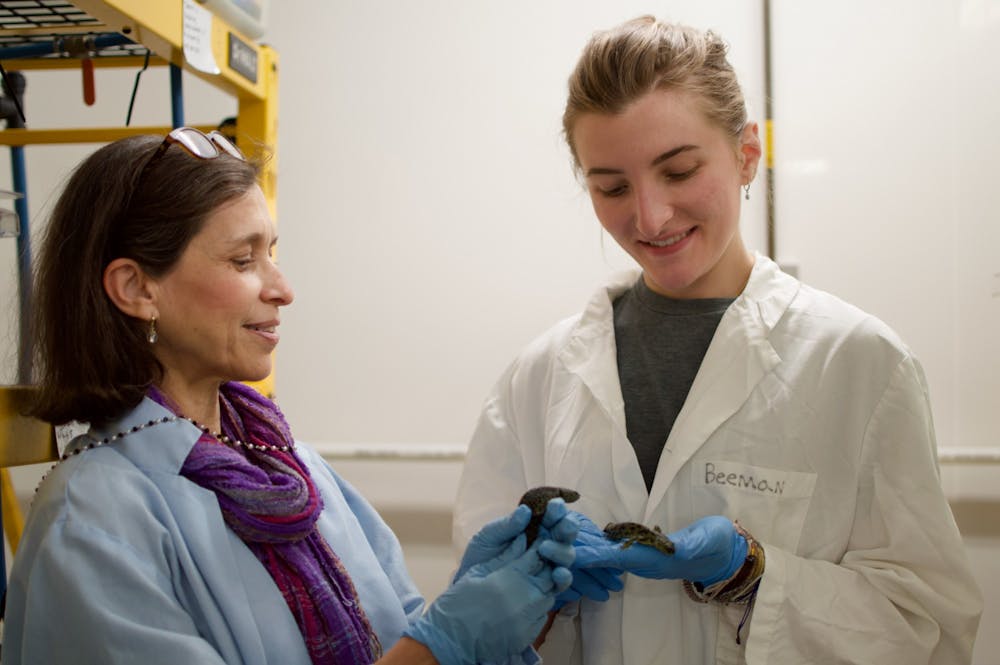Unlike people, a newt can lose part of an eye and regenerate it in a way that is functional.
In her lab, Katia del Rio-Tsonis, a biology professor at Miami University, is doing research to understand how newts, salamanders and embryonic organisms are able to regenerate tissue, specifically in the lens and retina.
“They have some amazing powerful abilities to regenerate, and that is why the newt is my favorite organism to work with,” Rio-Tsonis said.
Rio-Tsonis, along with Michael Robinson, a biology professor at Miami, and Justin Saul, an engineering professor at Miami, is doing this research in hopes of one day inducing regeneration in human eyes.
“If you have an eye disease or an injury that destroys your retina, there's nothing we can do for you, and so if we can get humans to regrow retinas, that's a big deal,” Robinson said.
Rio-Tsonis said Robinson’s lab mostly works with lens and lens development. In collaboration with Robinson’s lab, they have done gene editing to specific stem cells to try and mimic what the salamanders are doing when they regenerate.
Saul’s lab helps them with the scaffolds or engineered meshes where the cells will grow and then will mimic what the eye environment will be like.
“She has just done a really good job of pulling people together with different areas of expertise so that she can answer some really interesting biological questions,” Saul said.
Rio-Tsonis started her research with salamanders because she was interested in cancer research. Her husband was the one to introduce regeneration to her, specifically in newts. She started with limb regeneration, and when they moved to Ohio, she began working on the eye.
When Rio-Tsonis started at Miami, the university required her to do something different. As a new faculty member on the tenure track, she needed her own independent research program that differed from her husband’s.
Enjoy what you're reading?
Signup for our newsletter
“That showing of independence was super important, and unfortunately as a woman, you have to do it harder,” Rio-Tsonis said.
So she started on the retina, working with newts and embryonic chicks.
Her husband passed away about seven years ago, so she took over his research, which was the lens regeneration line. She now has two lines of research: lens regeneration using salamanders and newts and retina regeneration on embryonic chicks.
“Now I have two research programs,” Rio-Tsonis said. “I'm very busy and it’s very challenging, but I do love what I do.”




